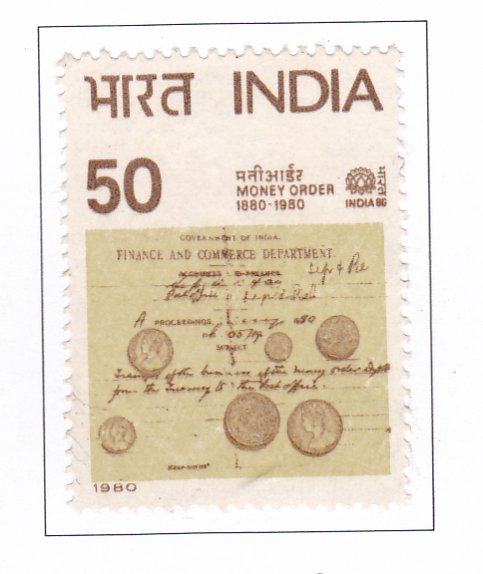Money Order Transfer Document, 1879

Technical Data
| Stamp Set | India '80 International Stamp Exhibition |
|---|---|
| Date of Issue | January 25, 1980 |
| Denomination | 50 p |
| Quantity | 3,000,000 |
| Perforation | comb 13 |
| Printer | Security Printing Press, Nashik |
| Watermark | Large Star and 'INDIA GOVT' (Sh) [Up] |
| Colors | Multicolor |
| Catalog Codes |
Michel IN 810 Stamp Number IN 853 Yvert et Tellier IN 607 Stanley Gibbons IN 956 |
| Themes | Coins | Documents | Finance | Philatelic Exhibitions | Stamp Collectors | Stamps |
The introduction of the money order service in India in 1880 marked a significant milestone in the development of the postal system. Prior to this, individuals had to undertake long journeys to make payments for various charges such as revenue and rent in person, causing inconvenience to the public.
Before 1880, money orders were issued and paid at Government Treasuries, but their limited availability (only 283 locations) made the process cumbersome for many. To address this issue, the responsibility for handling money orders was transferred from the Treasury to the Post Office, which had a much larger network of around 5500 locations.
Since then, the money order service has become immensely popular among the public. One of its key advantages is that payments can be made directly at the door of the payee, eliminating the need for individuals to travel long distances to make payments in person. As a result, the service has seen widespread adoption, with more than 108 million money orders issued and paid annually throughout the country.
The issuance of a special postage stamp commemorating the 100 years of the money order service acknowledges its importance in facilitating financial transactions and improving accessibility to payment services for the Indian public.
